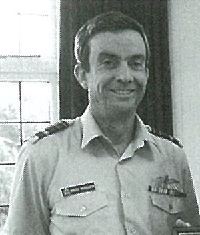
The Distinguished Flying Cross (DFC) is the third-level military decoration awarded to officers, and since 1993 to other ranks, of the United Kingdom's Royal Air Force and other services, and formerly to officers of other Commonwealth countries, for "an act or acts of valour, courage or devotion to duty whilst flying in active operations against the enemy".

Air Chief Marshal Sir Richard Edward Johns, is a retired senior Royal Air Force commander. He was a fighter pilot in the 1960s, commanding officer of a squadron during the 1970s and a station commander in the 1980s. Johns served as one of three British directors of operations on the senior planning staff for Operation Granby in 1991 and then acted as a supporting commander for joint operations in the Balkans in 1994. As Chief of the Air Staff he advised the British Government on the air force aspects of the Strategic Defence Review and on NATO's air campaign in Kosovo.

Air Chief Marshal Sir Ralph Alexander Cochrane, was a British aviator and Royal Air Force officer, perhaps best known for his role in Operation Chastise, the famous "Dambusters" raid.

Marshal of the Royal Air Force Sir Andrew Henry Humphrey, was a senior officer in the Royal Air Force. He fought in the Second World War as a fighter pilot taking part in the Battle of Britain and also took part in the withdrawal from Aden in November 1967. He served as the Chief of the Air Staff advising the new Labour Government on the implementation of their latest Defence Review. He then served as Chief of the Defence Staff but caught pneumonia within three months of taking office and died shortly afterwards.

Marshal of the Royal Air Force David Brownrigg Craig, Baron Craig of Radley, is a retired Royal Air Force officer and member of the House of Lords. He was a fast jet pilot in the 1950s, a squadron commander in the 1960s and a station commander in the 1970s. He served as Chief of the Air Staff during the late 1980s, when the Boeing Airborne early warning and control system was ordered and the European Fighter programme was being developed. He then served as Chief of the Defence Staff during the Gulf War. He was granted a life peerage as Baron Craig of Radley after his retirement from active service in 1991, sitting as a crossbencher. As of 2022, he is the last living officer in the British Armed Forces to have held a five-star rank whilst on active service.
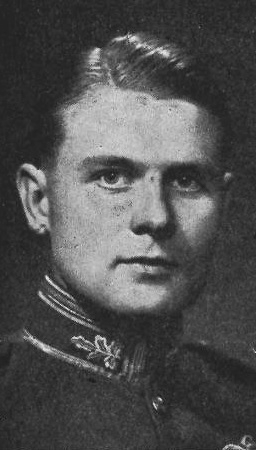
Marshal of the Royal Air Force Samuel Charles Elworthy, Baron Elworthy, was a senior officer in the Royal Air Force. He served as commander of a squadron of Blenheim bombers and then as a station commander during the Second World War. He became Chief of the Air Staff in the mid-1960s and implemented the cancellation of the TSR-2 strike aircraft and the HS681 military transport aircraft programmes. He also became Chief of the Defence Staff in which role he oversaw the evacuation from Aden in November 1967 and had to respond to the growing crisis in Northern Ireland in the late 1960s.

Air Chief Marshal Sir Stephen Gary George Dalton, is a retired senior officer of the Royal Air Force and former Lieutenant-Governor of Jersey.

Air Marshal Sir Stuart David Atha,, is a former senior officer of the Royal Air Force. He led No. 3 (Fighter) Squadron from 2000 to 2004, which included deployment to Iraq on Operation Telic, commanded RAF Coningsby (2006–08), No. 83 Expeditionary Air Group (2009–10) and No. 1 Group (2011–14), and served as the Air Component Commander for security during the 2012 London Olympics. Atha was RAF Deputy Commander Operations from 2016 to 2019.
Air Marshal Sir Timothy Michael Anderson, is a retired senior Royal Air Force (RAF) officer. He served as the inaugural Director-General of the UK Military Aviation Authority (MAA) from 2010 to 2013. The MAA was established in response to the Haddon-Cave Review into the issues surrounding the loss of an RAF Nimrod over Afghanistan in September 2006. Earlier in his career, Anderson was a fast jet pilot, primarily flying the Tornado ground attack aircraft, and as Officer Commanding No. 14 Squadron led the United Kingdom's Tornado commitment to Operation Allied Force, the NATO air campaign over Kosovo in 1999, for which he was awarded the Distinguished Service Order. He is currently Chairman of the UK Airspace Change Organising Group Steering Committee, overseeing a national infrastructure programme on behalf of the Secretary of State for Transport and the UK Civil Aviation Authority.
Air Marshal Sir Richard Bruce Bolt, was a bomber pilot in the Second World War and a senior Royal New Zealand Air Force officer in the post-war years. He was Chief of the Air Staff from 1974 to 1976 and Chief of the Defence Staff from 1976 to 1980, when he retired from the military.

Air Vice Marshal Peter James Stockwell, is a retired senior Royal New Zealand Air Force (RNZAF) commander and former Chief of Air Force.
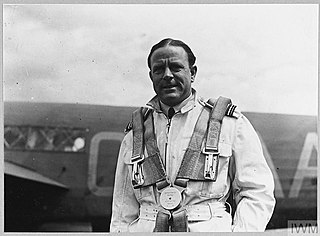
Air Vice-Marshal Cyril Eyton Kay,, known as Cyrus Kay, was a New Zealand aviator and military leader. Born in Auckland, Kay joined the Royal Air Force in 1926 for a five-year period of service, during which he attempted to break the record for the fastest flight from England to Australia. He remained in aviation in civilian life and was a participant in the MacRobertson Air Race of 1934.

Air Chief Marshal Sir Stephen John Hillier, is a retired senior Royal Air Force officer, who served as Chief of the Air Staff from 2016 to 2019. He was awarded the Distinguished Flying Cross for actions in the Gulf in 1999 and was awarded the United States Bronze Star Medal for service in the Iraq War. He went on to be Air Officer Commanding No. 2 Group, Director Information Superiority at the Ministry of Defence, Deputy Chief of the Defence Staff (Capability) and finally Chief of the Air Staff from July 2016. He was appointed chair of the Civil Aviation Authority in 2020.
Air Marshal Sir David Ewan Jamieson, was a senior commander in the Royal New Zealand Air Force. He was Chief of the Air Staff from 1979 to 1983, and Chief of the Defence Staff from 1983 to 1986.

Air Marshal Edward Jackson Stringer, is a senior Royal Air Force officer. Since April 2018 he has served as Director-General of the Defence Academy. He also served as Director-General of Joint Force Development, Strategic Command from April 2018 to March 2021. He served as Assistant Chief of the Air Staff from April 2013 to January 2015, and as Assistant Chief of the Defence Staff (Operations) from March 2015 to 2018.

Air Vice-Marshal Christopher James Luck is a British charity executive and retired Royal Air Force officer. He was Commandant of the Royal Air Force College Cranwell from 2013 to 2016, and Commandant of the Joint Services Command and Staff College from 2017 to 2019. Since 2019, he has been CEO of the Shaw Trust.
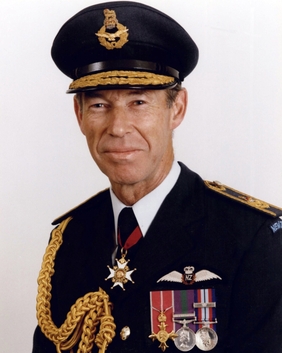
Air Marshal David Manson Crooks, was a senior commander of the Royal New Zealand Air Force. He was Chief of the Air Staff from April 1983 to October 1986 and Chief of the Defence Staff thereafter until 1987 when he retired.
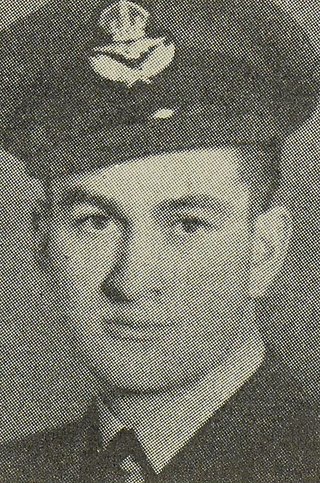
Air Vice Marshal Cyril Laurence Siegert, was an air officer of the Royal New Zealand Air Force, who served as a bomber pilot during the Second World War and rose to be Chief of the Air Staff, the most senior appointment in the RNZAF, from 1976 to 1979.
Lieutenant General Sir John Airth Mace, is a retired senior commander of the New Zealand Army. He served as Chief of the General Staff, the professional head of the New Zealand Army, from 1984 to 1987, and then as Chief of Defence Staff from 1987 until his retirement in 1991.

Air Vice-Marshal Ian Gordon Morrison, was a New Zealand aviator and military leader. Born in Hanmer Springs, he briefly served in the Royal Air Force before transferring to the Royal New Zealand Air Force in 1939. During the early stages of the Second World War, he was a bomber pilot with No. 75 Squadron, which was formed mostly with New Zealand personnel and operated Vickers Wellingtons. He returned to New Zealand in 1940 for instructing duties and then was a staff officer with the RNZAF's No. 1 Islands Group, based in Vanuatu. He later commanded No. 3 Squadron during the Solomons campaign. After the war, he held a series of staff posts before becoming Chief of Air Staff of the RNZAF in 1962. In this capacity he replaced much of the air force's dated equipment and sought to improve its strike capacity. Appointed a Companion of the Order of the Bath in 1965, he retired the following year. He died in 1997, aged 83.
